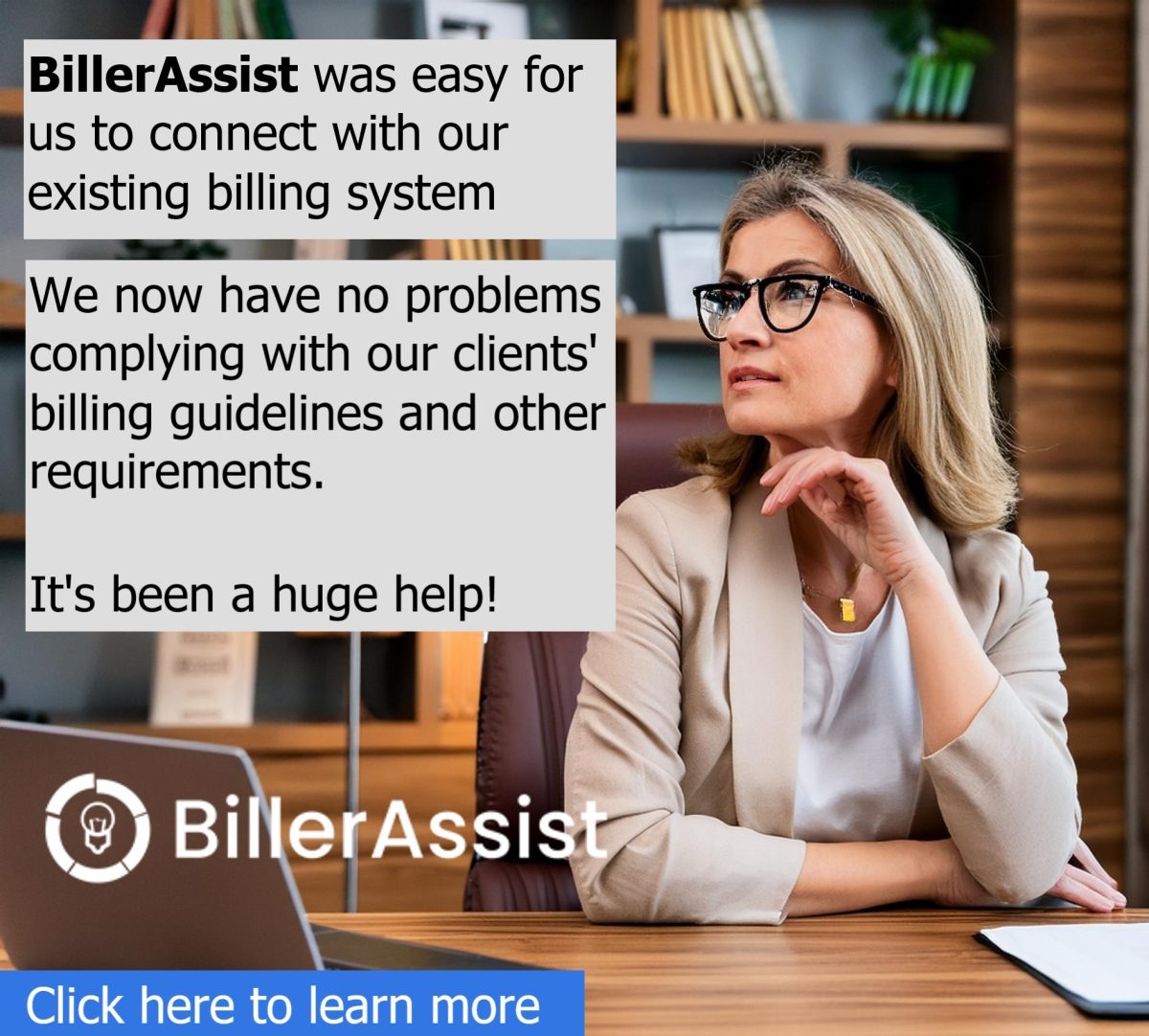Solutions to Optimize Legal Practice Management
No longer is there any need for the legal industry to fall behind in the implementation of AI and machine learning to propel operational efficiencies.
Cutting-edge solutions now allow law firms to optimize:
Adopting these readily available technologies drives efficiency and profitability for law firms.
Improve Current Billing Practices
Law practice and advisory podcast the Un-Billable Hour reveals lawyers are missing out on revenue due to non-billable tasks, late invoicing, and poor time tracking.
Additional revenue is lost within the collections process, as Georgetown Law’s recent Report on the State of the Legal Market finds law firm collection rates have been decreasing.
The Georgetown Law report in particular found that, despite increasing standard hourly rates by 11% at $476 per hour, and regardless of the economic improvement after the 2008 financial meltdown, law firm collection rates continue to decrease.
Similarly, the Legal Trends Report from Clio estimates firms are collecting 1.5 hours of billed work for an eight-hour workday, leaving six hours of unaccounted, unbillable, or uncollected time lost every day.
In addition, the Georgetown report found, although the majority of law firms taking part in the survey increased their billing rates at different levels, there was a contrary pressure on realization rates as less of the hours billed at the higher rates actually ended up being paid.
This pressure follows from understandable resistance from clients about rate increases for legal services.
These studies illustrate the difficulties law firms have to increase profits solely by increasing rates. The reports suggest that raising rates does little good if clients are refusing to pay for all the hours billed.
The studies also demonstrate that the significant amount of time dedicated to ethically-mandated billing review, in addition to clients who do not pay all or significant parts of their legal bills, are leading factors accounting for law firm revenue losses.
To resolve this issue, the recent Industry Outlook report by Major, Lindsey & Africa encourages law firms to expand their use of technological solutions to revive productivity and efficiency, and to innovate in ways that will help increase profits.
Increase Revenue with Automation
Lawyers are all too familiar with the time entry and review process, as well as the pressures to get bills out every month.
Moreover, lawyers who have clients that require Uniform Task-Based Management System (UTBMS) coded bills in electronic formats like Legal Electronic Data Exchange Standard (LEDES) 1998B are often stymied by the additional burdens of coding entries in a uniform and compliant fashion.
The UTBMS was originally intended to improve the billing process. The LEDES oversight committee (LOC) created uniform billing codes to categorize legal work and expenses using UTBMS codes along with standardized LEDES formats for UTBMS-coded invoices. In doing so, the uniform codes and formats provided much-needed transparency for clients to better understand their legal bills.
However, UTBMS coding requirements created inefficiencies for law firms charged with the slow task of code selection for each and every time and expense entry. In addition, the manual process of UTMBS code selection and application leaves room for human error, such as inaccurate or incorrect code input.
Not only does the application of the codes to billing entries itself interrupt the billing process, but requirement of UTBMS-coded invoices hinders the billing submission process as clients often reject invoices with incorrect codes.
The faster law firms generate accurate and compliant bills, the quicker invoices get submitted for payment. Ideally, this means invoices submitted to clients faster should account for improved cash flow.
But help is on the way. For example, the recent Thomson Reuters Legal Management Trends report describes how automation reduces billing disputes by determining precisely where invoices are out of compliance. The legal trends report further details a notable decrease in the amount of time required to process and submit invoices, as well as improvements in the accuracy of legal bill review.
Thankfully, there are now various legal billing applications that ease the trouble of manual UTBMS code selection and LEDES formatting. Better yet, developments in technology are moving more toward automation as more applications are becoming available, which standardize UTBMS codes for all time and expense entries.
The above examples illustrate how the latest developments in AI and machine learning technologies can be utilized to improve the efficiency of legal invoicing for law firms and to improve transparency for clients.
With various tools that are presently available, implementing billing automation applications to boost law firm efficiency is not difficult.
The American Bar Association's Law Technology Today recommends that law firms consider adopting legal software tools when looking to improve law firm practice management.
Among the recommendations in seeking out legal software tools, Law Technology Today suggests that firms consider utilizing applications that automate:
- Time and expense entries
- UTBMS/LEDES coding
- Compliance with client billing requirements
- Invoice format conversions
As automation proves useful in eliminating inefficiencies, automation also proves valuable in increasing profitability.
Conclusion
Without well organized and accurate structures set in place to improve the billing process, firms will continue to lose out on cost savings and will continue to expend more time performing unbillable and time-consuming administrative tasks.
Early adopters gain a clear advantage by using the latest legal technology available to stay ahead of the competition.




